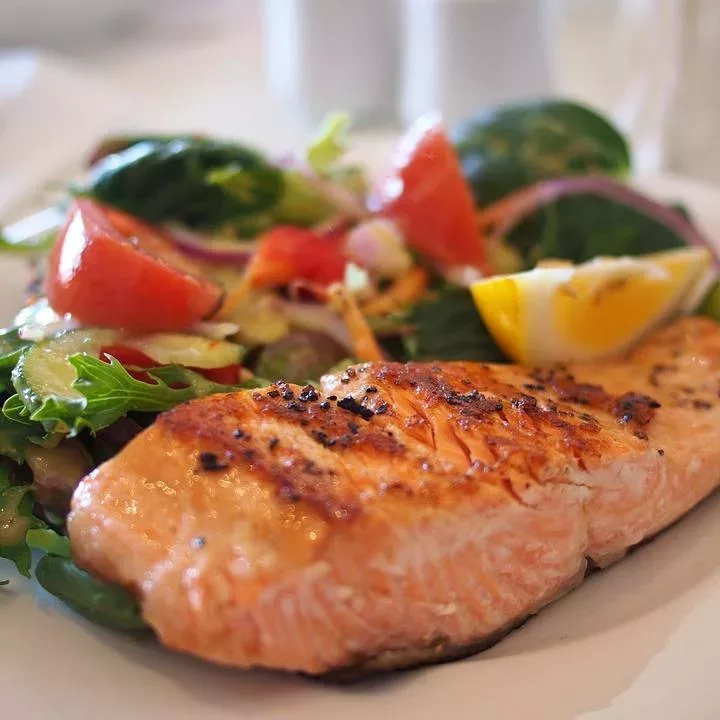
Celebrating Salmon: Three Techniques For Perfect Salmon Every Time
I recommend three approaches to cooking fish which are simple, adaptable, and quick: pan roasting, salt broiling, and poaching. They are all accessible to home cooks, requiring no specialized equipment or knowledge. If you have a typical kitchen and a basic range of tools, you can use these alternatives to baking or frying. —Paul Manthe, Cordata deli
When I was a child, sometime back in the 1970s, I recall that around this time of year, after the fall salmon run, our family would often receive gifts of whole salmon from sport fishing acquaintances. I assume these gifts were occasioned by the realization that the giver had caught more than they could consume or find space for in the freezer.
These gift salmon were invariably baked whole, simply salted and peppered. The meat came out a bit dry, as you might imagine, and the leftovers thriftily went into salmon hash, casserole, or salmon salad.
Since then, Bellingham’s population has nearly doubled, as it has throughout the entire Puget Sound region, and the salmon runs have decreased considerably as the growing human population stresses the local environment.
I propose that we cherish those remaining and when fortunate enough to acquire a salmon that we prepare it with the utmost respect and care.
As we probably will not see abundant salmon runs like those ever again, I propose that we cherish those remaining and when fortunate enough to acquire a salmon, or even part of one, that we prepare it with the utmost respect and care. Long exposure to dry heat, as in baking, is not the best way to prepare salmon, or any fish. Alternative methods are called for.
I recommend three approaches to cooking fish which are simple, adaptable, and quick: pan roasting, salt broiling, and poaching. They are all accessible to home cooks, requiring no specialized equipment or knowledge. If you have a typical kitchen and a basic range of tools, you can use these alternatives to baking or frying.
My purpose in presenting these methods as simply as possible is to encourage a sense of ease and dispel some of the fear of cooking I feel from many people. Cooking is a life skill, it’s basic and necessary. It is above all not a competition, in spite of all the television shows which insist on presenting it that way.
I encourage you to try these methods and adapt them to your own needs and tastes.
Method 1: Pan Roasting
This is by far my favorite method.
Equipment:
Oven-going skillet.
- Preheat oven to 400 F.
- Portion skin-on fillets.
- Heat skillet on range top until just hot, not smoking.
- Add a teaspoon or so of butter or oil to the skillet, then quickly add the fish, skin side up.
- Sear the fish in the hot skillet for just two or three minutes, then quickly turn skin side down and slide the skillet into the oven.
- Bake for three minutes per pound of fish.
- Serve with lemon or vinegar, or create a pan sauce with wine, butter, and herbs using the remaining juices from the skillet.
Method 2: Salt Broiling
A Japanese technique that uses the high direct heat of your oven’s broiler to seal in the juices of the fish.
Equipment:
Broiler pan or a flat pan of some sort with a rack inside to elevate the fish off the bottom of the pan.
- Individually portion skin-on filleted fish (approximately a half-pound per person).
- Liberally salt each piece of fish with coarse or kosher salt on the flesh side only.
- Allow to stand at room temperature for about a half-hour.
- Move the top rack of your oven to its highest position, and set your oven controls to broil.
- When hot, broil fish for a good five minutes or so. It will hiss and flare from time to time, but this is to be expected.
- After surface of fish is browned and crusted, slide out the pan, turn the fish skin side up, return to oven, and broil for a few more minutes to finish.
- Present skin side down, with a squeeze of lemon or a dash of vinegar.
Method 3: Poaching
A moist heat method, which Scandinavian cooks have relied on for hundreds of years.
Equipment:
Stove-top pan deep enough to hold a few inches of water.
- In a pan large enough to accommodate your fish, bring a few inches of salted water (1 teaspoon salt per cup of water) to a simmer.
- Lower fish into salted water, skin side up.
- Simmer for three to five minutes only, then remove carefully and allow the fish to rest, covered, for a few minutes more before serving.
- Serve with a squeeze of lemon, or for added richness I like to add a bit of butter or a drizzle of flavored oil.